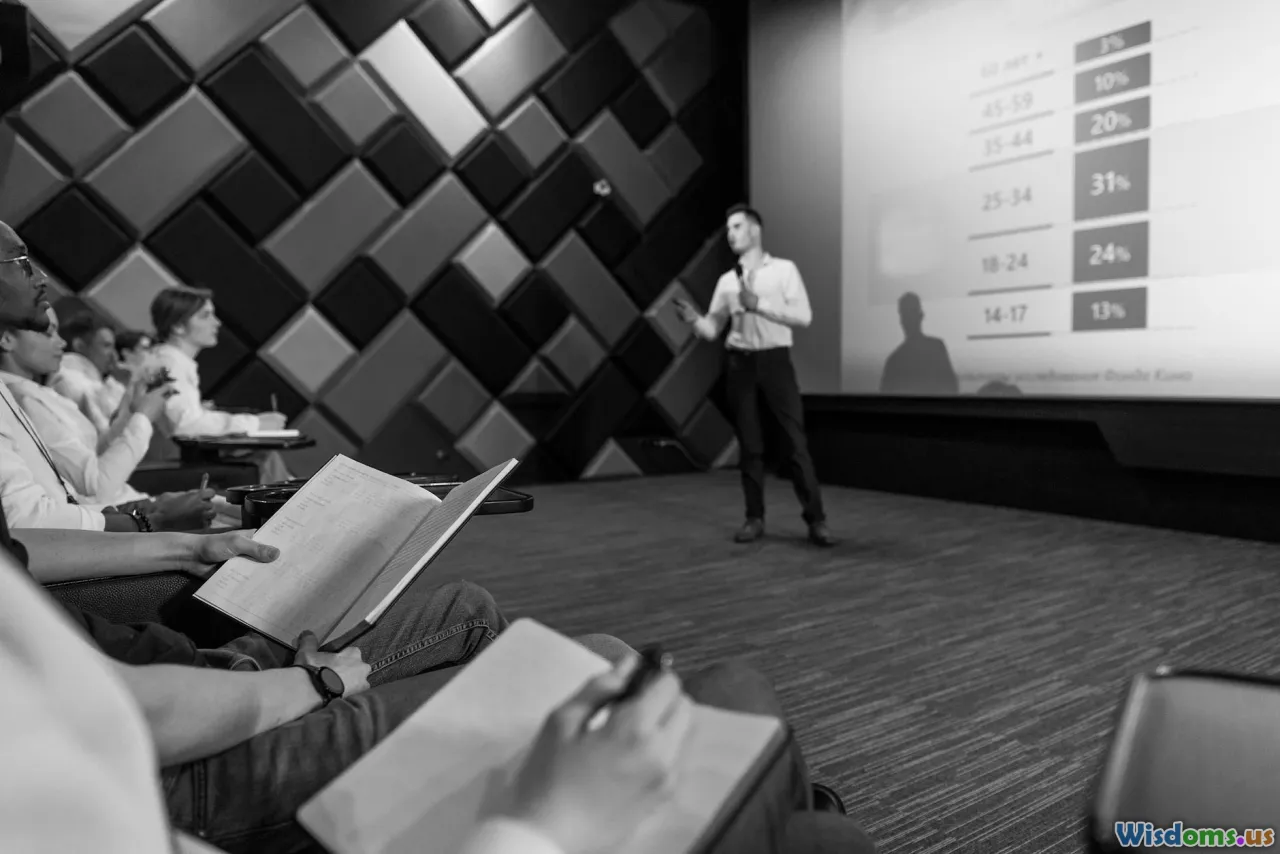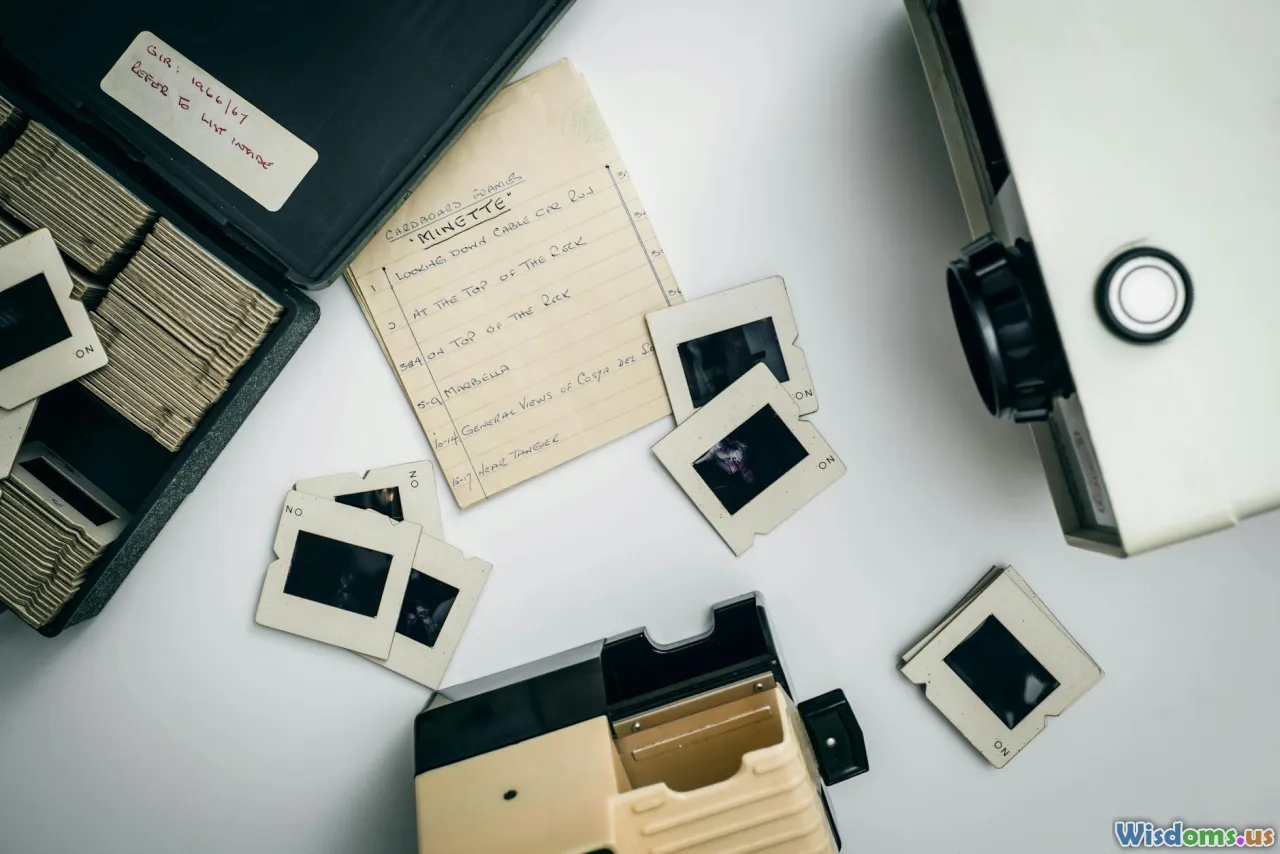
Top Five Audience Engagement Tricks Every Speaker Needs
10 min read Discover five essential techniques for captivating any audience and elevating your presentations with proven speaker engagement strategies. (0 Reviews)
Top Five Audience Engagement Tricks Every Speaker Needs
Every seasoned public speaker knows the true challenge lies not just in delivering your message, but in keeping your audience hooked from your opening sentence to the final applause. The gulf between merely speaking and sparking true involvement can make or break presentations, pitches, and performances alike. For professionals seeking to elevate their delivery, mastering audience engagement is a non-negotiable skill. Here, we unpack five proven techniques—backed by research, stories, and lived experience—guaranteed to invigorate your sessions and leave lasting impressions.
Know Your Crowd: Customizing Content for Maximum Relevance

Picture delivering a keynote to a room full of tech entrepreneurs versus a gathering of nonprofit volunteers: The same PowerPoint will ring hollow in one group or the other. Engagement begins long before you step on stage; it’s born from a deep understanding of who is sitting in front of you.
Start with demographic research: age, industry, interests, cultural background, and previous knowledge levels. With hybrid and virtual talks now a norm, many apps provide analytics on registrants—leverage these tools to tailor your references, humor, and tone.
Tip: Send a brief pre-event survey asking potential attendees what topics challenge them. Use questions like, “What’s your biggest obstacle to X?” Responses pave the way for micro-casestudies or on-the-spot shoutouts, demonstrating real-time responsiveness.
Example in Action: Barack Obama, in his presidential years, was renowned for tweaking anecdotes and even metaphors based on local landmarks and industries wherever he traveled. That localization didn’t just amuse his crowds—it signaled sincere respect and readiness.
How-To:
- Check attendee lists for organization or job roles, if available.
- Study the event’s theme and prior years’ feedback reports.
- Arrive early and mingle. Catch fragments of conversation for quick reference in your intro.
Igniting a Two-Way Street: Interactive Elements That Work

Passive listening breeds disengagement, especially in longer settings. Transform your session into a participatory experience by adding interactive elements at regular intervals.
Live Polling: Incorporate real-time voting platforms such as Slido, Mentimeter, or Kahoot! Ask pointed questions relevant to your topic. For instance: “Which digital trend worries you most?” Displaying instant results generates buzz and gives the silent majority a voice.
Q&A in Snippets: Instead of parking all questions at the end, invite inquiries throughout. Prompt with: “Who’s faced this challenge in their work? How did you approach it?”
Physical Engagement: Movement commands memory. For in-person events, utilize low-barrier activities: have the audience stand, raise hands, or group into microteams. Even a simple "turn to your neighbor" discussion can reinvigorate the crowd, as proven by Yale research showing that kinesthetic actions boost cognitive retention by up to 34%.
Example: At the 2022 TEDxSydney, psychologist Adam Grant kicked off with a hand-raising poll on procrastination. Participants instantly saw themselves mirrored in the crowd, feeling less alone and more involved.
The Power of Story: Craft Narratives that Resonate, Not Just Inform

Data, statistics, and bullet points may sway the logical mind, but their grip pales compared to a vivid, personal story. According to Stanford research, stories are remembered up to 22 times more than facts alone.
Transform Lessons into Storylines: Weave your key message around a real-life character—yourself, a client, or a relatable archetype. A sales coach might recount the saga of a nervous rookie overcoming rejection, drawing a parallel to the listeners’ own journeys.
Evoke Emotion: Use the classic tension-release formula: introduce a problem, escalate difficulties, and finally reveal a satisfying resolution. Sprinkle sensory details and emotion rather than generic “lessons learned.”
How-to:
- Catalog at least ten personal or professional stories relevant to your niche.
- Practice telling them in under three minutes—pixels of narrative that can slot into any presentation.
- Match the tone and style to your crowd: self-deprecating humor for millennials; gravitas and legacy for corporate boards.
Real Life Win: Brené Brown’s iconic talk on vulnerability wasn’t a litany of statistics—it was a chronicle of her own personal struggle, forging an instant rapport with millions around the globe.
Visuals with Purpose: Harnessing Slides, Props, and Demos to Captivate

In our digital era of shrinking attention spans, audiences expect presentations that engage their eyes as much as their minds. Yet, too many presenters use slides as crutches, filling the screen with walls of text and forgetting the basic principle of visual storytelling.
Rule of Thumb: Simplicity plus Surprise.
- One compelling image per key idea says more than 50 bullet points.
- High-contrast graphics, easy-to-read fonts, and minimal data per slide underscore—rather than drown—your message.
- Space out surprises: a hidden animation, unexpected prop, or a brief demo triggers what psychologists call "noticing reflex," forcing renewed focus.
Props for Physical Demonstrations: Bill Gates famously unleashed a jar of mosquitoes during a TED talk, driving home a point about malaria. That risky move produced more tweets and ripples than the rest of his (excellent) slides combined. If your setting allows, consider a safe prop or hands-on display.
How-to:
- Invest time in slide design with tools like Canva or Prezi, or hire a freelance designer if stakes are high.
- For online talks, share a quick annotated screen, live polling results, or a visual explainer.
- Practice transitions so you’re not fumbling with clickers or gadgets, breaking the flow you worked so hard to build.
Authenticity and Adaptability: Reading Energy and Pivoting in Real Time

Even the most meticulously rehearsed talk can go awry if a room’s energy tanks. Great speakers read their audiences like jazz musicians reading a crowd—shifting rhythm, tone, and even content mid-flight to maintain dynamism.
Watch the Faces, Adjust Without Panic:
- Notice drooping eyelids, frequent glances at smartphones, or restless shifting. Time to change tempo or insert a surprise interaction!
- Acknowledge the moment: “I can tell that was a lot to absorb. Shall we stand up for a quick stretch before I continue?”
- Be transparent. Admit if you’ve veered off track or misread a reaction. Audiences appreciate humility and realness.
Example: Simon Sinek, in a workshop suffering from afternoon fatigue, once ditched his planned closing story for an impromptu group brainstorm, co-creating solutions to a shared problem. That session received some of the highest feedback scores he'd ever earned.
Practical Steps:
- Build at least two "off-ramp" activities into your talk for zapping dullness if you sense it rising.
- If answering a question stalls engagement, relay it outwards: "How would you approach this, based on what we've covered?"
Study after study (Harvard, 2019) confirms that speakers who display vulnerability and responsiveness see marked gains in trust, openness, and even message recall.
Leaving every room charged with energy and creating memorable impact isn’t about charisma alone—it’s about adopting the strategies that ensure your audience is seen, involved, and invested. Equip yourself with these five engagement essentials, and watch your influence soar long after you leave the stage.
Rate the Post
User Reviews
Popular Posts




















